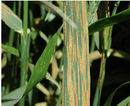IMA Fungus (2019) 10 (13) - Fungal clones win the battle,
From Pestinfo-Wiki
 | Selected publication you are invited to contribute to the discussion section (above tab) |
Fungal clones win the battle, but recombination wins the war
IMA Fungus 10 (13)
Abstract: Clonal reproduction is common in fungi and fungal-like organisms during epidemics and invasion events. The success of clonal fungi shaped systems for their classification and some pathogens are tacitly treated as asexual. We argue that genetic recombination driven by sexual reproduction must be a starting hypothesis when dealing with fungi for two reasons: (1) Clones eventually crash because they lack adaptability; and (2) fungi find a way to exchange genetic material through recombination, whether sexual, parasexual, or hybridisation. Successful clones may prevail over space and time, but they are the product of recombination and the next successful clone will inevitably appear. Fungal pathogen populations are dynamic rather than static, and they need genetic recombination to adapt to a changing environment.
(The abstract is excluded from the Creative Commons licence and has been copied with permission by the publisher.)
Full text of article
Database assignments for author(s): Andre Drenth, Brenda D. Wingfield
Research topic(s) for pests/diseases/weeds:
general biology - morphology - evolution
Pest and/or beneficial records:
| Beneficial | Pest/Disease/Weed | Crop/Product | Country | Quarant. |
|---|---|---|---|---|
| Puccinia striiformis | ||||
| Cryphonectria parasitica | ||||
| Hymenoscyphus fraxineus |